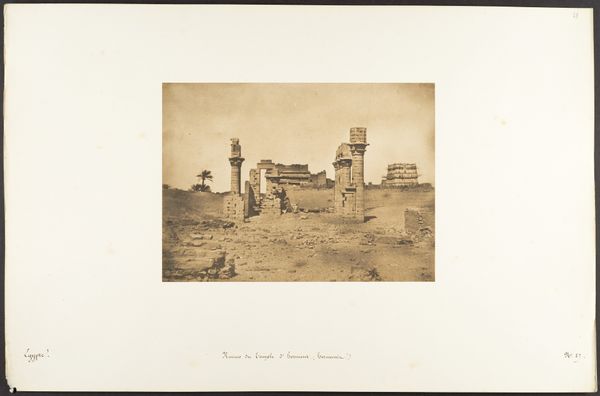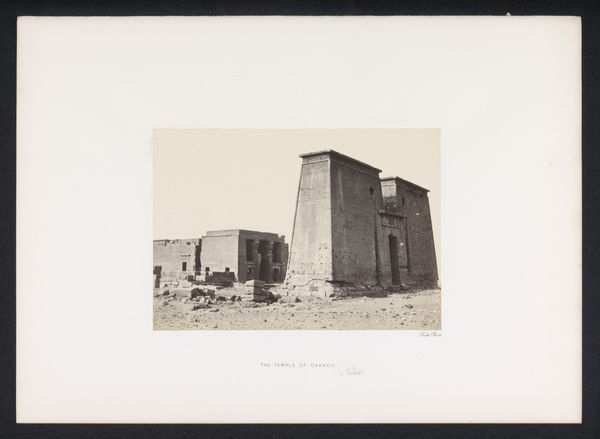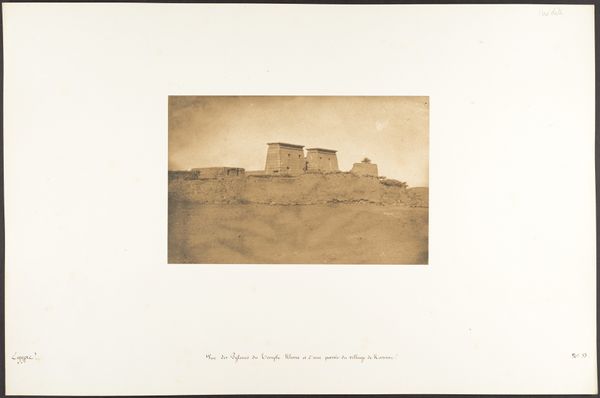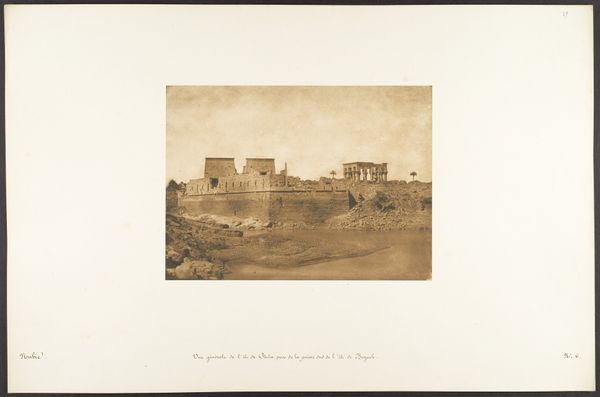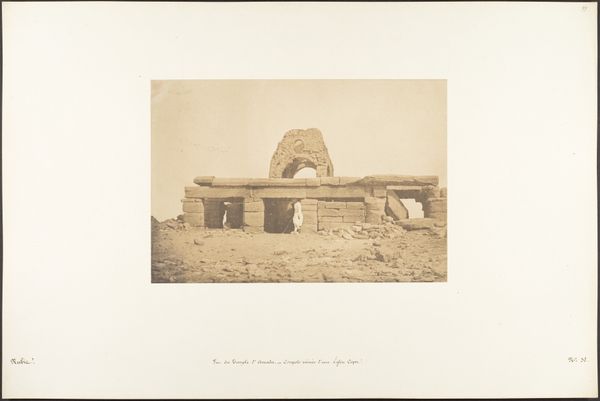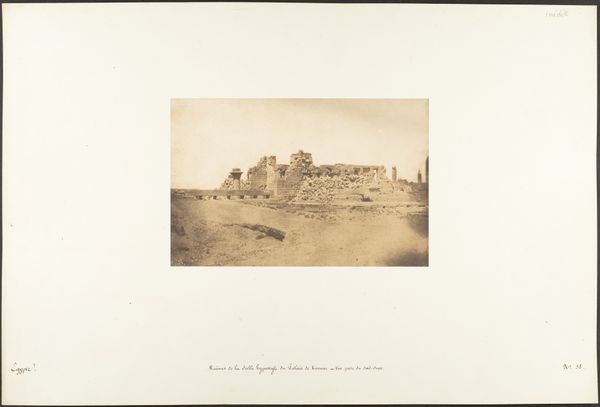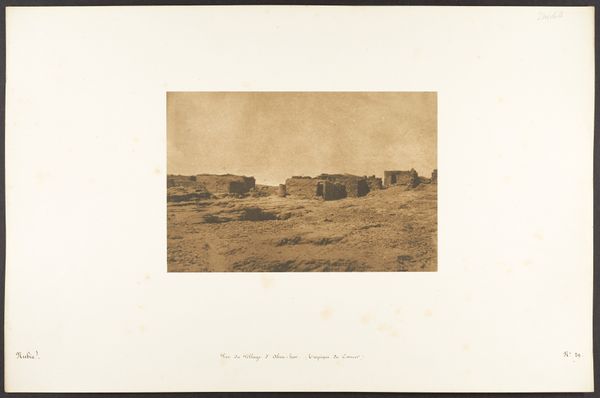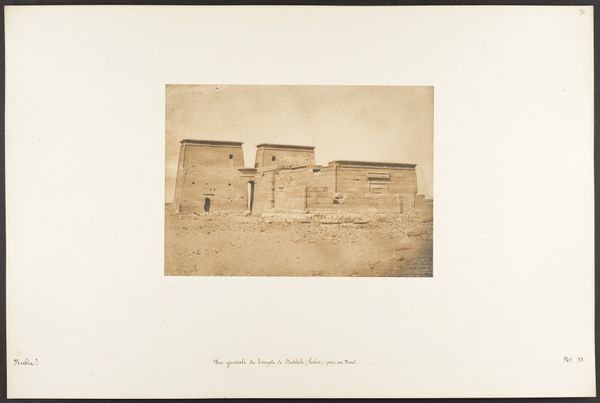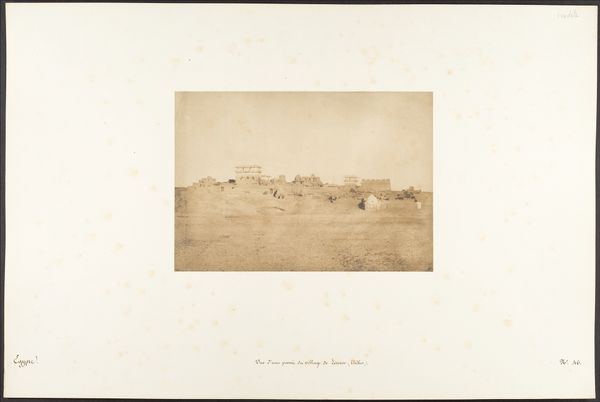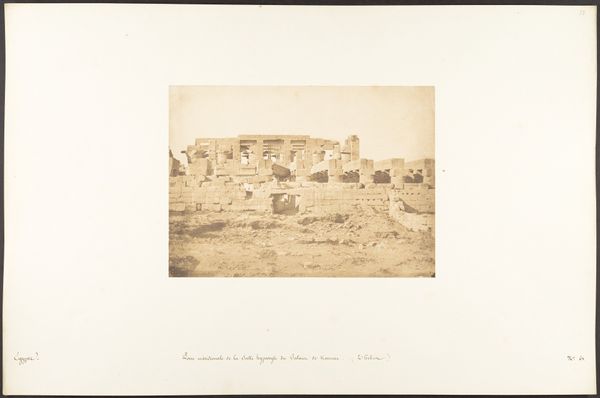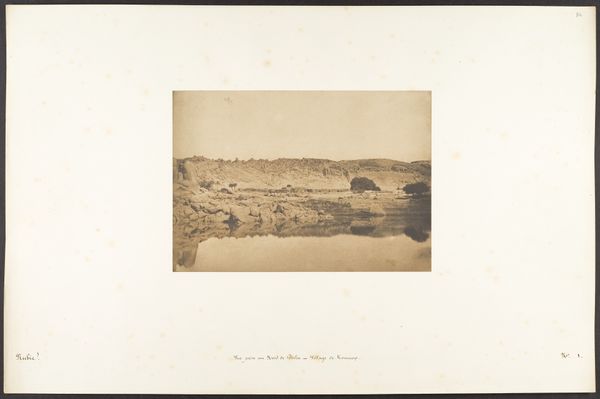
Vue générale du Temple et du Village de Déboude (Parembole) 1850
0:00
0:00
photography, architecture
#
landscape
#
ancient-egyptian-art
#
photography
#
ancient-mediterranean
#
architecture
Dimensions: Image: 5 5/8 × 8 11/16 in. (14.3 × 22 cm) Mount: 12 5/16 × 18 11/16 in. (31.2 × 47.5 cm)
Copyright: Public Domain
This photograph of the Temple and Village of Déboude was created by Maxime Du Camp in the mid-19th century. It's a part of a larger project commissioned to document Egyptian monuments and sites. Du Camp's work, while seemingly documentary, was deeply embedded in the orientalist views prevalent during the colonial era. These images played a role in constructing and reinforcing Western perceptions of the East. They often portrayed a vision of a timeless, exotic, and unchanging land, implicitly justifying European intervention and control. In a way, the act of photographing was an act of possession. Consider how the framing and composition might influence our understanding of Egyptian history and culture. The depopulated landscape and the focus on ruins evoke a sense of a glorious past, but obscure the contemporary lives and experiences of the Egyptian people. How does this affect our perception of this place and its people? This image serves as a reminder of how photography can be a powerful tool in shaping cultural narratives, often reflecting the biases and power dynamics of its time.
Comments
No comments
Be the first to comment and join the conversation on the ultimate creative platform.


